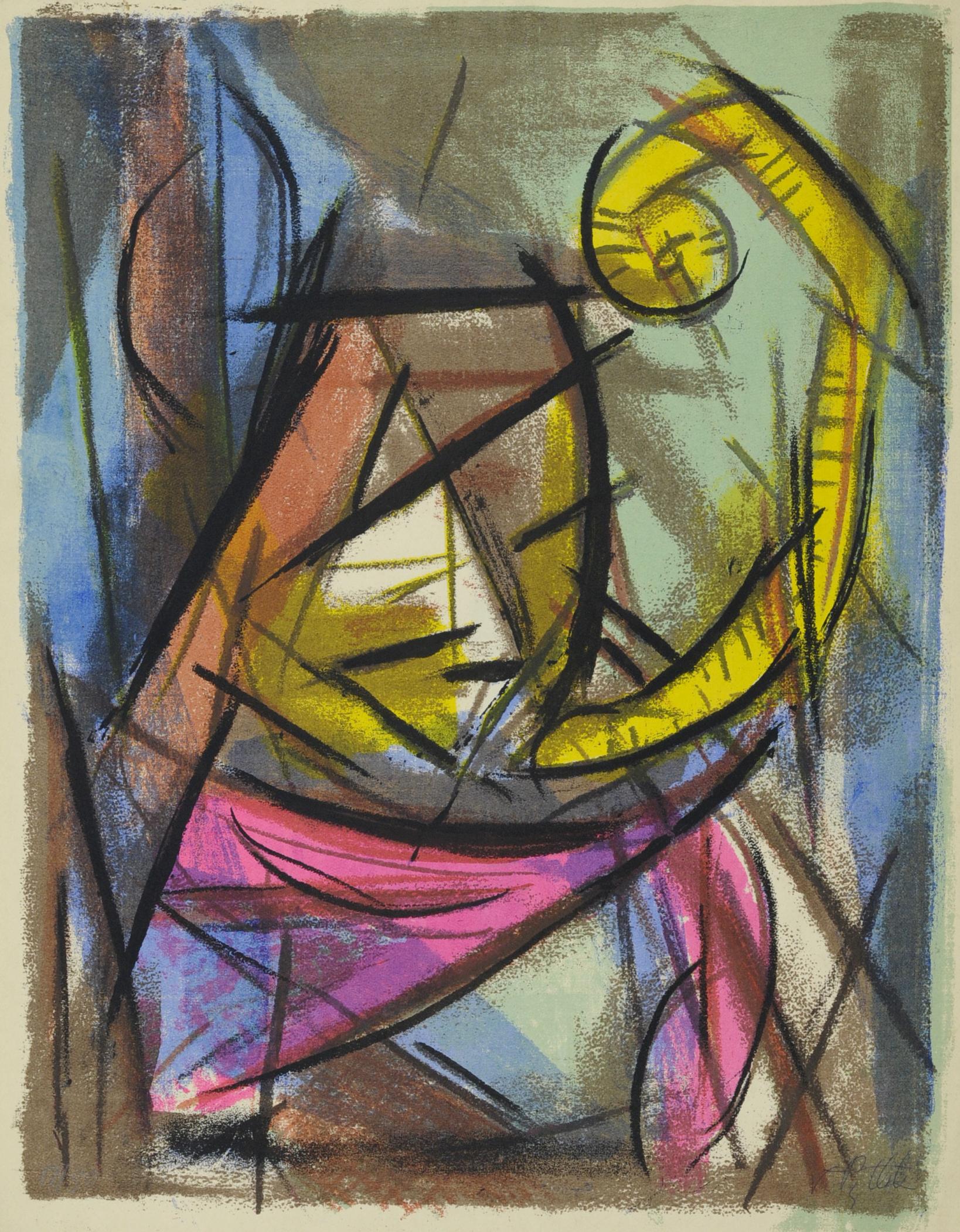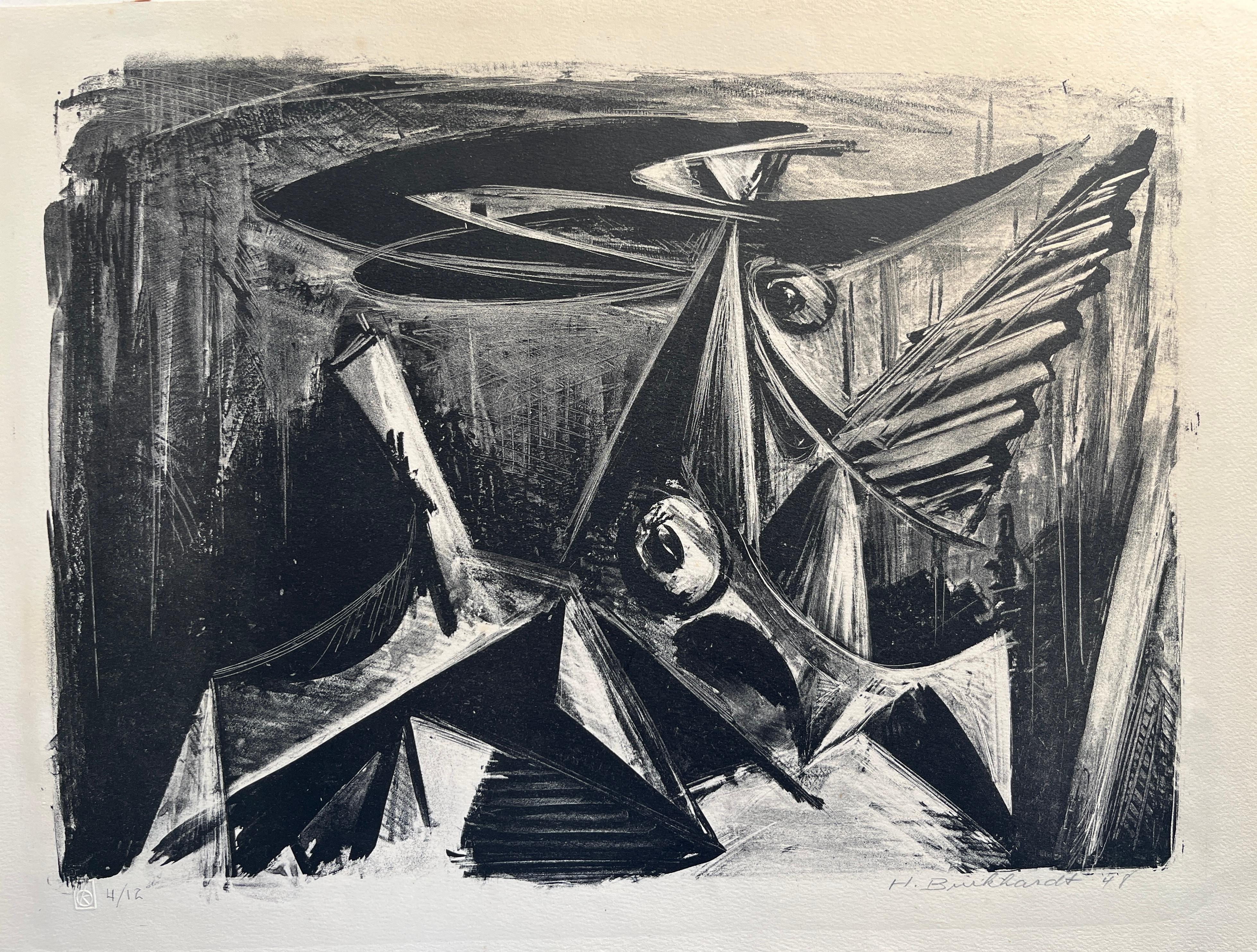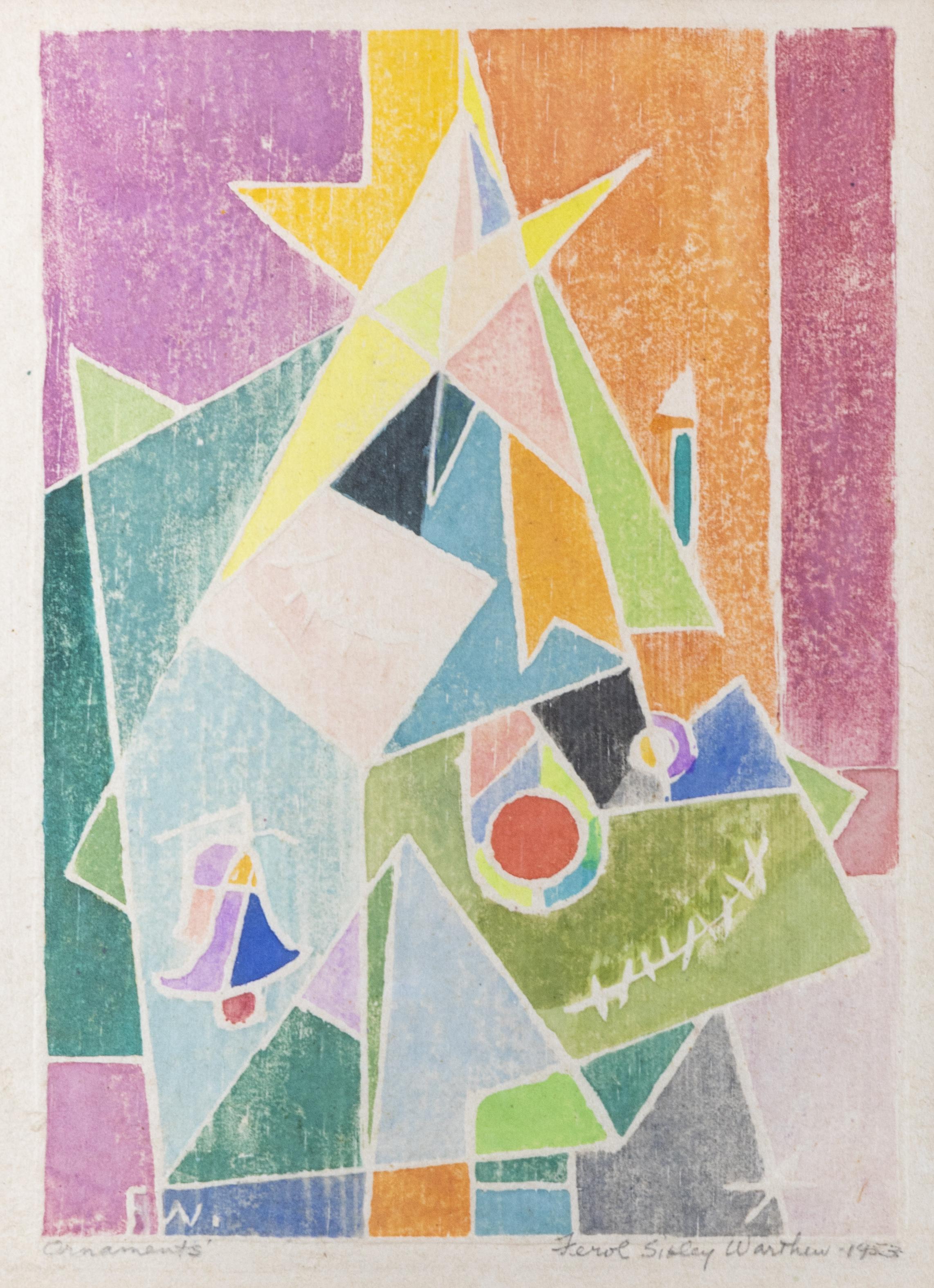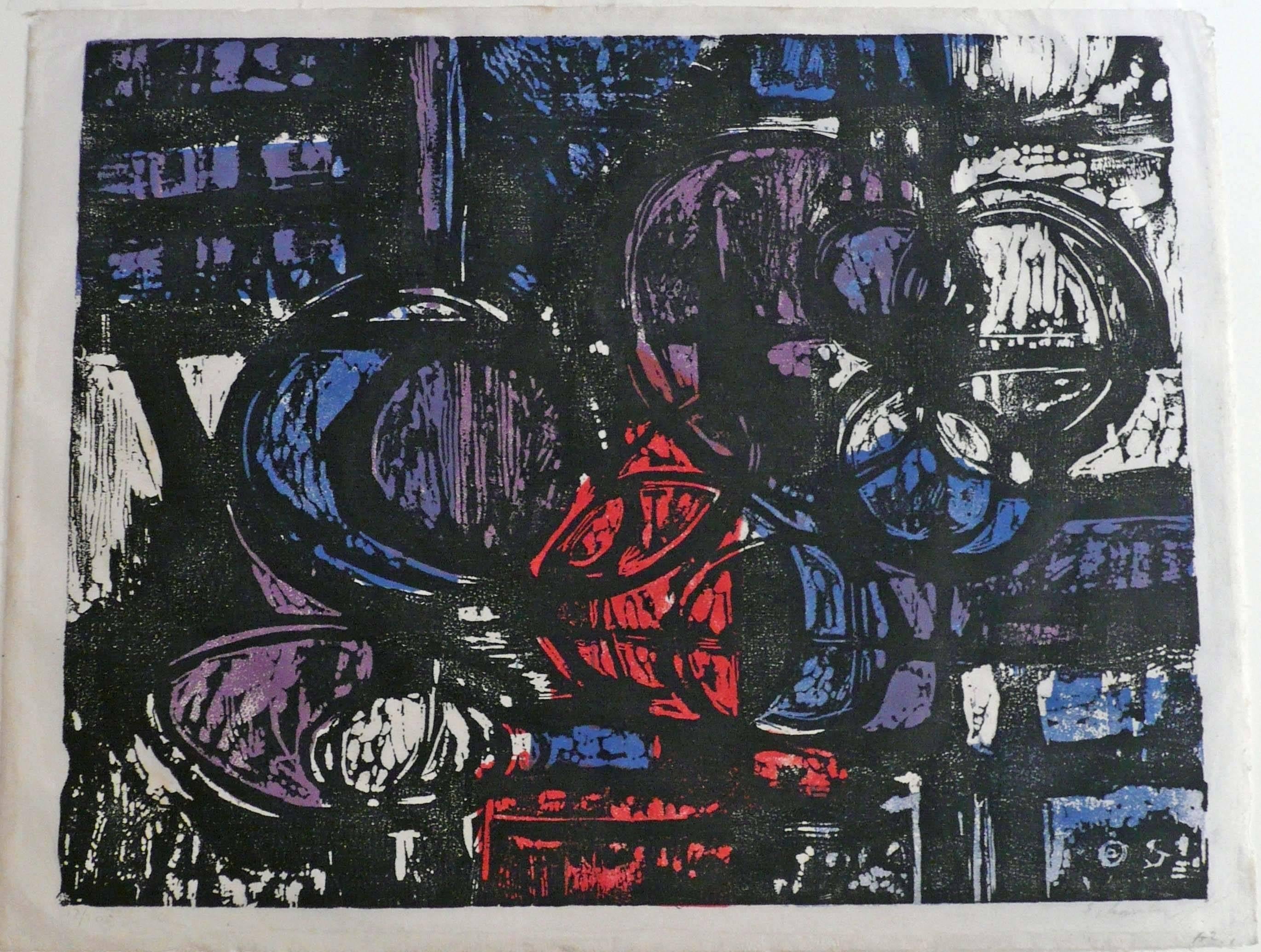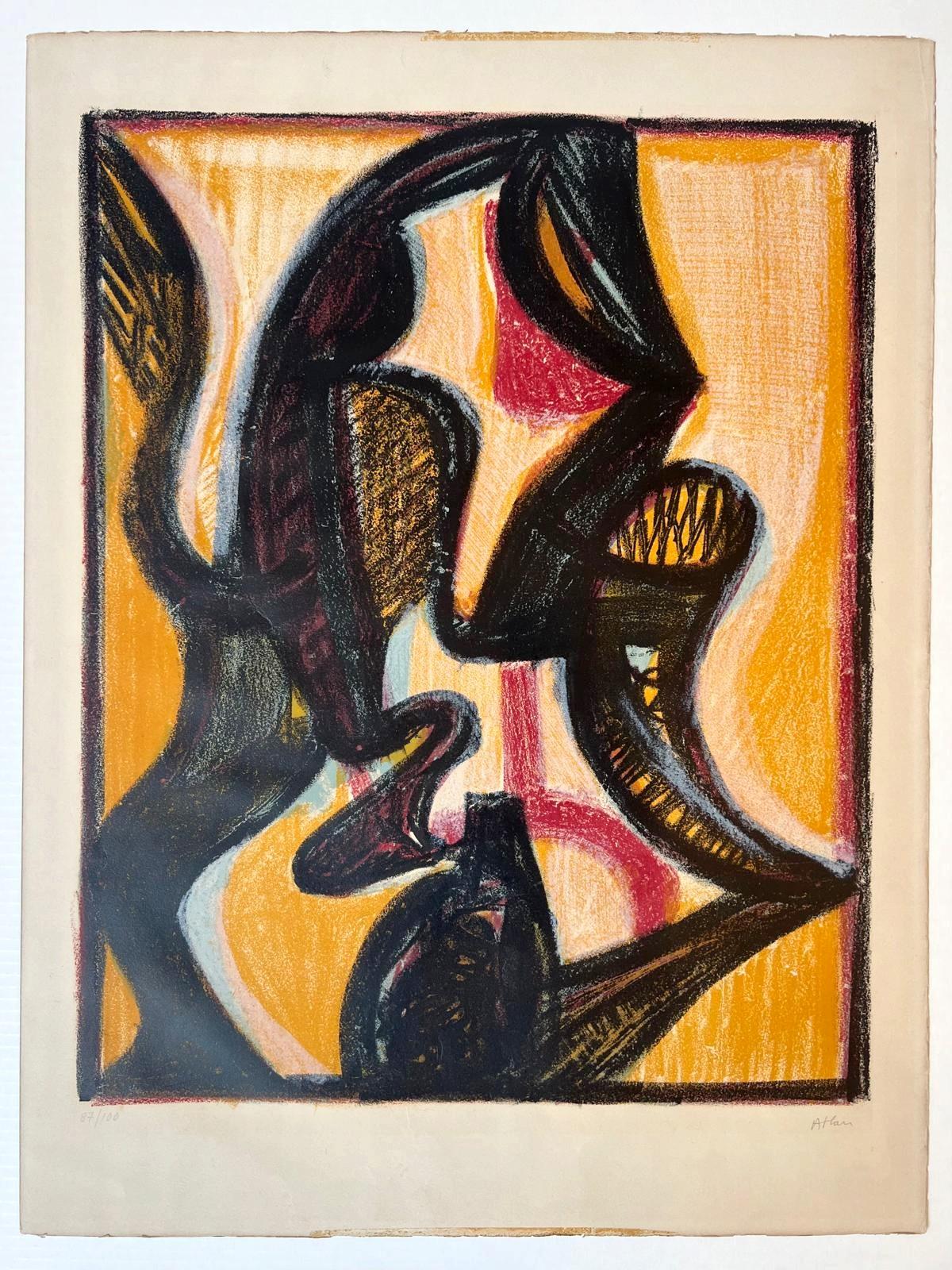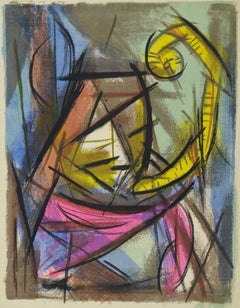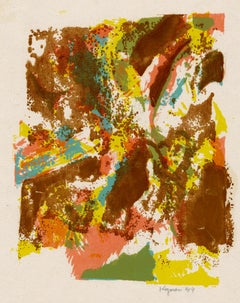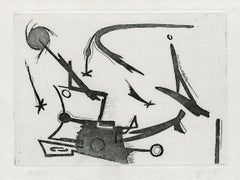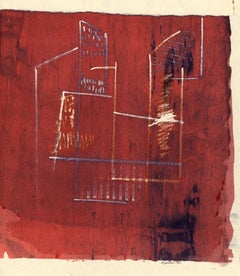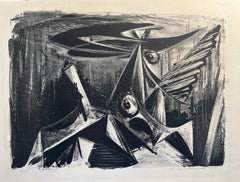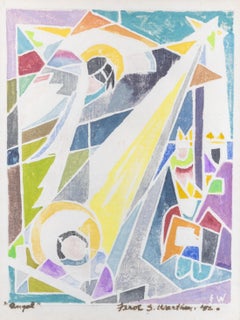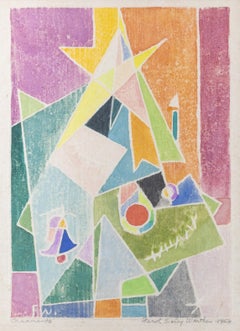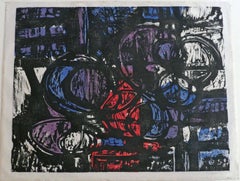Want more images or videos?
Request additional images or videos from the seller
1 of 10
Leonard PytlakThe Fan1950's
1950's
$800
£620.06
€702.06
CA$1,145.13
A$1,248.66
CHF 648.99
MX$14,948.14
NOK 8,231.81
SEK 7,710.63
DKK 5,243.45
About the Item
The Fan
Silkscreen printed in colors, 1950's
Signed and numbered in pencil by the artist (see photos)
Edition: 40 (24/40)
Condition: very good
Image size: 25 1/8 x 19 5/8 inches
Courtesy British Museum:
Biography
Born in Newark, New Jersey, Pytlak studied at the Newark School of Fine and Industrial Art before enrolling at the Art Students League, New York. It was probably here that he was introduced to printmaking. Under the WPA/FAP he produced a mural for the Greenpoint Hospital in Brooklyn. He was a member of the Graphic Arts Division of the New York City WPA/FAP from 1935 to 1941. His lithographs date from the mid-1930s to the early 1940s and showed New York scenes, such as the Bowery and Central Park.
In 1938 Pytlak became involved with Anthony Velonis's Silk Screen Unit of the Graphic Arts Division of WPA/FAP, and he played a pioneering role in developing and promoting the screenprint as a fine-art technique. In 1941 he was awarded a Guggenheim Fellowship to investigate new techniques in colour lithography and screenprinting. He was a founding member of the National Serigraph Society and was twice elected its president. Some ninety-six screenprints by Pytlak, dated between 1941 and 1949, are listed by Reba and Dave Williams on pages 315-17 of their article 'The Early History of the Screenprint' Print Quarterly, vol. 3, no. 4 (December 1986), pp. 287-21. He contributed a screenprint, They Serve on All Fronts, to the exhibition 'America in the War' organized by Artists for Victory in 1943; his print depicted a medical surgery unit working on the front line and won second prize after Robert Gwathmey in the serigraphy section. During the 1940s Pytlak had several solo shows, including the ACA Gallery in 1942, the Weyhe Gallery in 1944, the US National Museum, Smithsonian Institution, in 1948, and the Serigraph Gallery in 1949. He shared an exhibition of his screenprints with Harry Shokler at Kennedy & Company in 1943.
For many years he taught drawing, painting and screenprinting. He ran a private class for disabled students from the New York State Rehabilitation Department during the 1960s. In 1982 the Craft Students League Gallery in New York gave him a retrospective of his printmaking over the past fifty years.
The Smithsonian American Art Museum, Washington DC, holds eight prints by him in its collection.
"Leonard Pytlak worked for the New York City WPA graphics program from 1934 to 1941. He studied art at the Art Students League and at the Newark School of Fine and Industrial Art. He was a founding member of the National Serigraphic Society. His work has been collected by the Metropolitan Museum of Art, the Brooklyn Museum, the Museum of Modern Art and others."
Illinois State Museum
- Creator:Leonard Pytlak (1910, American)
- Creation Year:1950's
- Dimensions:Height: 25.13 in (63.84 cm)Width: 19.63 in (49.87 cm)
- Medium:
- Movement & Style:
- Period:
- Condition:
- Gallery Location:Fairlawn, OH
- Reference Number:Seller: FA56951stDibs: LU14015705402
About the Seller
5.0
Recognized Seller
These prestigious sellers are industry leaders and represent the highest echelon for item quality and design.
Gold Seller
Premium sellers maintaining a 4.3+ rating and 24-hour response times
Established in 1978
1stDibs seller since 2013
822 sales on 1stDibs
Typical response time: <1 hour
Associations
International Fine Print Dealers Association
- ShippingRetrieving quote...Shipping from: Akron, OH
- Return Policy
More From This Seller
View AllThe Whistle
By Leonard Pytlak
Located in Fairlawn, OH
The Whistle
Silkscreen printed in colors, c. 1950's
Signed and numbered in pencil by the artist
Condition: very good
Image: 23-1/2 x 18-1/2"
Courtesy British Museum:
Biography
Born ...
Category
1950s Abstract Abstract Prints
Materials
Screen
Untitled
By Myron Kozman
Located in Fairlawn, OH
Untitled
Screen print, 1941
Signed and dated in pencil lower right
From an unnumbered edition of 6
Condition: Excellent
Image size: 7 1/4 x 5 3/4 inches
Sheet size: 10 x 8 inches
Pr...
Category
1940s Abstract Abstract Prints
Materials
Screen
Untitled
By Henri Goetz
Located in Fairlawn, OH
Untitled
Signed in pencil lower right (see photo)
Edition: 25 (9/25) (see photo)
Engraving, drypoint & carborundum
Printed by the artist
Condition: Excellent, slight residue on rever...
Category
1960s Abstract Expressionist Abstract Prints
Materials
Drypoint, Etching
Untitled, 1941
By Myron Kozman
Located in Fairlawn, OH
untitled
Color serigraph, 1941
Signed and dated lower right (see photo)
Very small edition (less than 10)
(Looks like a red brick building with white windows, probably in Chicago whe...
Category
1940s Abstract Abstract Prints
Materials
Screen
Untitled
By Henri Goetz
Located in Fairlawn, OH
Untitled
Engraving, drypoint & carborundum, c. 1960's
Signed and numbered in pencil lower margin (see photos)
Edition: 25 (9/25)
Printed by the artist
Condition: Adhesive residue on ...
Category
1960s Abstract Expressionist Abstract Prints
Materials
Engraving
Abstraction
By Abraham Walkowitz
Located in Fairlawn, OH
Signed and dated in ink lower center
Provenance:
Charlotte Bergman, noted collector and patron of Walkowitz. See photo for additional information.
Category
1930s Modern Abstract Drawings and Watercolors
Materials
Ink, Pen
You May Also Like
Untitled
By Hans Burkhardt
Located in New York, NY
Lithograph, 1948. Signed by the artist and dated in pencil, lower right. Numbered 4/12 in pencil, lower left.
Category
1940s American Modern Abstract Prints
Materials
Lithograph
Angel
Located in Missouri, MO
Angel, 1952
Ferol K. Sibley Warthen (American, 1890-1986)
Color Woodblock Print
6.5 x 5 inches
16 x 13.75 inches with frame
Signed Lower Right
Titled Lower Left
Born 1890, Died 1986...
Category
1950s American Modern Abstract Prints
Materials
Color
Ornaments
Located in Missouri, MO
Ornaments, 1953
Ferol K. Sibley Warthen (American, 1890-1986)
Color Woodblock Print
7 x 4.75 inches
16 x 13.75 inches with frame
Signed and Dated Lower Right
Titled Lower Left
Born 1890, Died 1986...
Category
1950s American Modern Abstract Prints
Materials
Color
CIRCLE IMAGE NO. 25
By Louis Schanker
Located in Portland, ME
Schanker, Louis. CIRCLE IMAGE NO. 25. Relief Print in color, 1954-1955. Edition of 210 published by IGAS. Signed and numbered 17/200 (the edition included 10 artist's proofs). 14 x 1...
Category
1950s Abstract Abstract Prints
Materials
Woodcut
East
Located in Paris, FR
Lithograph, 1957
Handsigned by the artist in pencil and numbered 87/100
Publisher : Editions le Musée de Poche, Paris
Printer : Jean Pons
Catalog : [Polieri 1747]
66.00 cm. x 50.00 c...
Category
1950s Abstract Abstract Prints
Materials
Lithograph
Abstract Mid 20th Century WPA Non Objective American Modernism New Hope Modern
By Louis Stone
Located in New York, NY
Abstract Mid 20th Century WPA Non Objective American Modernism New Hope Modern.mixed media. 21 x 16 (sight). Housed in a hand carved frame.
Louis King Stone ...
Category
1940s American Modern Mixed Media
Materials
Gouache, Board
More Ways To Browse
Vintage Industrial Art
Shokler Harry
Mel Strawn
Miro Album 21
Miro Large Prints
Motherwell Posters
Noel Martin
Oy Yo
Philip Held
Phillip Hefferton
Picasso Signed Linocut
Pierre Schneider
Rene Carcan
Robert Motherwell Paris Suite
Robert Motherwell Poster
Robert Motherwell Samurai
Rrose Selavy
Salvador Dali Tristan And Isolde
